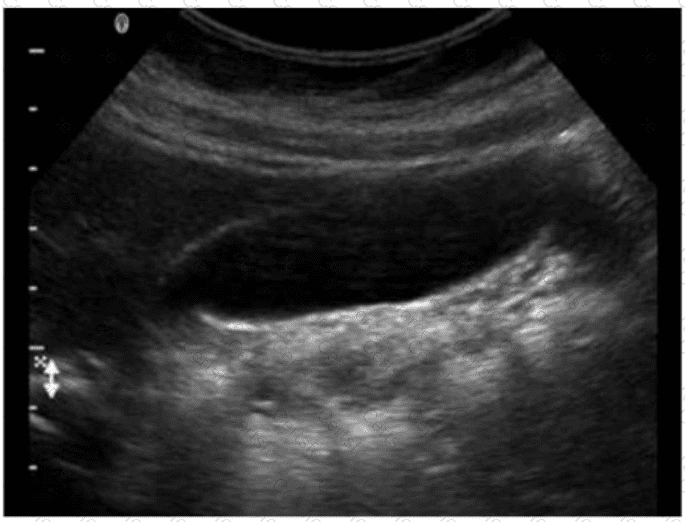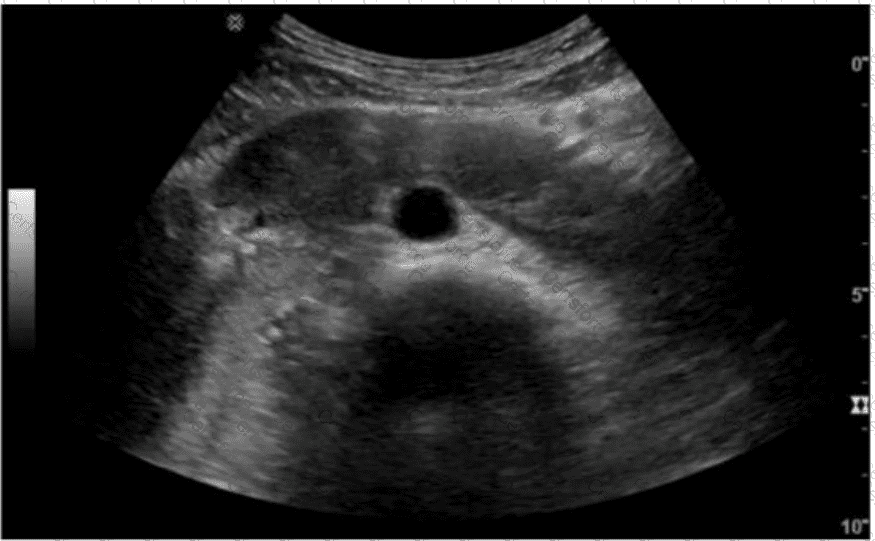The ultrasound image demonstrates multiple parallel echogenic lines within the gallbladder lumen, extending distally and diminishing in intensity. These equidistant lines are classic for a reverberation artifact.
Reverberation occurs when the ultrasound beam reflects multiple times between two strong reflectors (such as the anterior gallbladder wall and the transducer), creating repeating echoes that appear as equally spaced lines. This is frequently seen in:
The gallbladder (especially when collapsed or near the wall)
Near air-filled structures
With metallic objects or surgical clips
Reverberation does not represent a true anatomical structure and should be distinguished from real pathology.
Comparison of answer choices:
A. Banding refers to speed displacement or slice-thickness artifacts and typically does not appear as repetitive lines.
B. Shadowing is a dark band posterior to highly attenuating structures like gallstones or bone, not present here.
C. Attenuation is a general term for the reduction in sound energy as it travels—posterior acoustic shadowing is one type.
D. Reverberation — Correct. The characteristic bright, parallel lines within the gallbladder lumen confirm this artifact.
[References:, Kremkau FW. Sonography Principles and Instruments, 9th ed. Elsevier; 2015., Rumack CM, Wilson SR, Charboneau JW, Levine D. Diagnostic Ultrasound, 5th ed. Elsevier; 2017., Hagen-Ansert SL. Textbook of Diagnostic Sonography, 8th ed. Elsevier; 2017., , , ]

